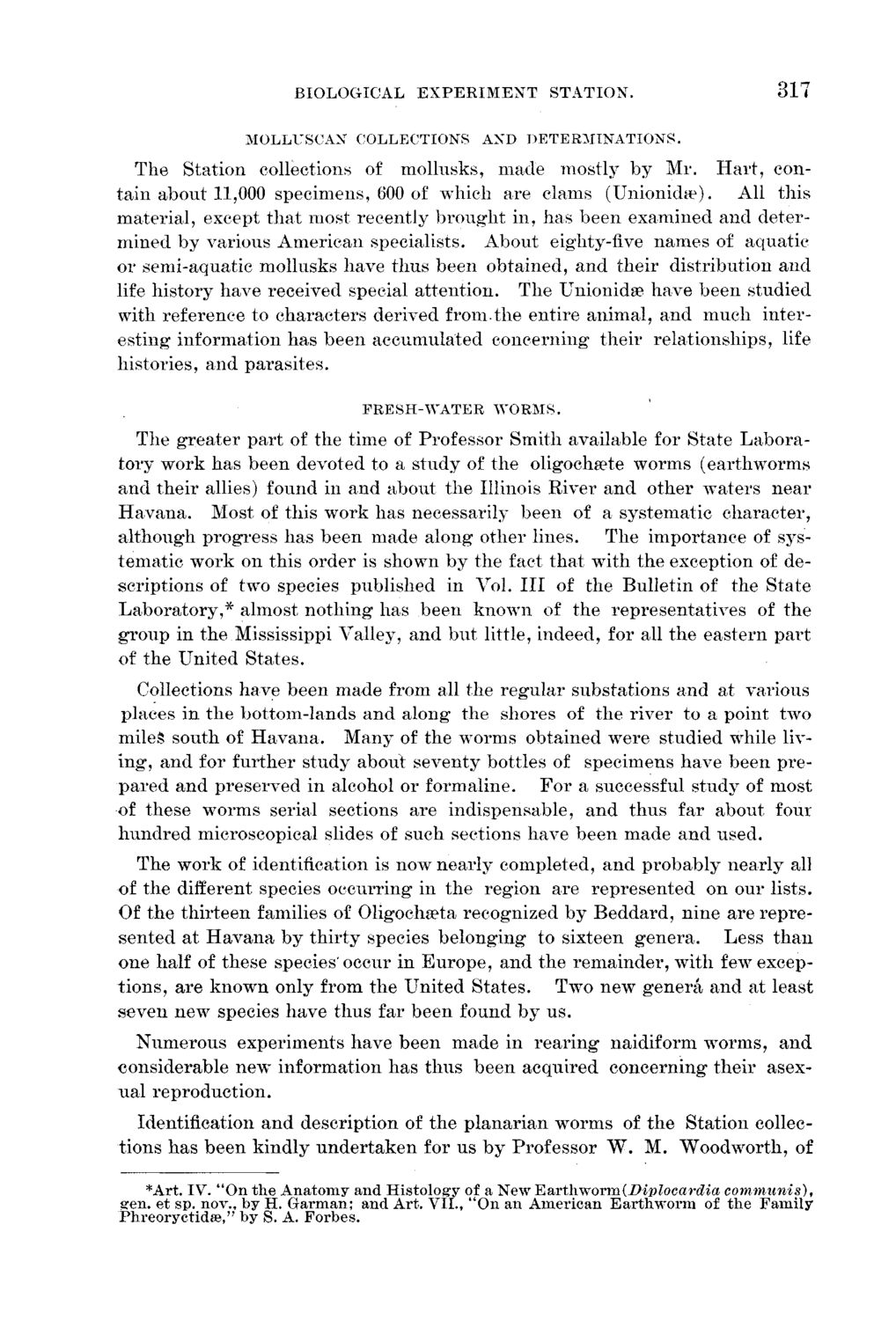| |
| |
Caption: Board of Trustees Minutes - 1896
This is a reduced-resolution page image for fast online browsing.

EXTRACTED TEXT FROM PAGE:
BIOLOGICAL E X P E R I M E N T STATION. 317 MOLLUSCAN COLLECTIONS AND DETERMINATIONS. The Station collections of molhisks, made mostly by Mr. Hart, contain about 11,000 specimens, 600 of which are clams (Unionidse). All this material, except that most recently brought in, has been examined and determined by various American specialists. About eighty-live names of aquatic or semi-aquatic mollusks have thus been obtained, and their distribution and life history have received special attention. The Unionidae have been studied with reference to characters derived from.the entire animal, and much interesting information has been accumulated concerning their relationships, life histories, and parasites. FRESH-WATER WORMS. The greater part of the time of Professor Smith available for State Laboratory work has been devoted to a study of the oligochsete worms (earthworms and their allies) found in and about the Illinois River and other waters near Havana. Most of this work has necessarily been of a systematic character, although progress has been made along other lines. The importance of systematic work on this order is shown by the fact that with the exception of descriptions of two species published in Vol. I l l of the Bulletin of the State Laboratory,* almost nothing has been known of the representatives of the group in the Mississippi Valley, and but little, indeed, for all the eastern part of the United States. Collections have been made from all the regular substations and at various places in the bottom-lands and along the shores of the river to a point two miles south of Havana. Many of the worms obtained were studied while living, and for further study about seventy bottles of specimens have been prepared and preserved in alcohol or formaline. For a successful study of most of these worms serial sections are indispensable, and thus far about four hundred microscopical slides of such sections have been made and used. The work of identification is now nearly completed, and probably nearly all of the different species occurring in the region are represented on our lists. Of the thirteen families of Oligochgeta recognized by Beddard, nine are represented at Havana by thirty species belonging to sixteen genera. Less than one half of these species'occur in Europe, and the remainder, with few exceptions, are known only from the United States. Two new genera and at least seven new species have thus far been found by us. Numerous experiments have been made in rearing naidiform worms, and considerable new information has thus been acquired concerning their asexual reproduction. Identification and description of the planarian worms of the Station collections has been kindly undertaken for us by Professor W. M. Woodworth, of *Art. IV. " O n t h e Anatomy and Histology of a New E a r t h worm (Dwlocardia communis), gen. et sp. nov., by H. G a r m a n ; and Art. VII., " O n an American E a r t h w o r m of t h e Family Phreoryctidse," by S. A. Forbes.
| |